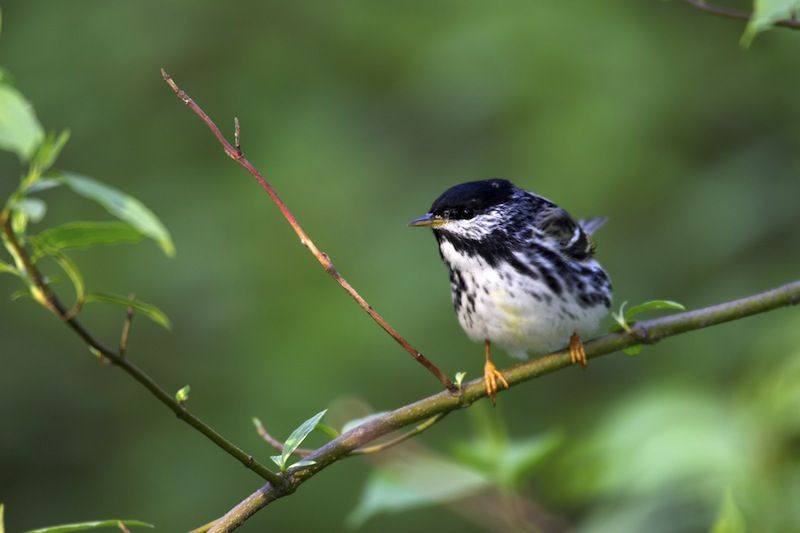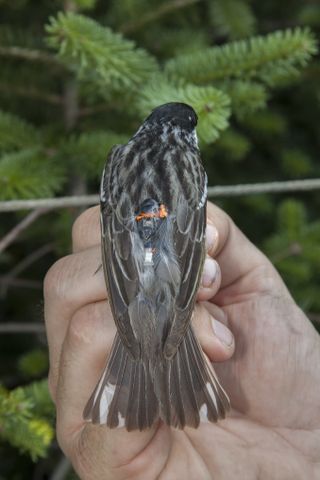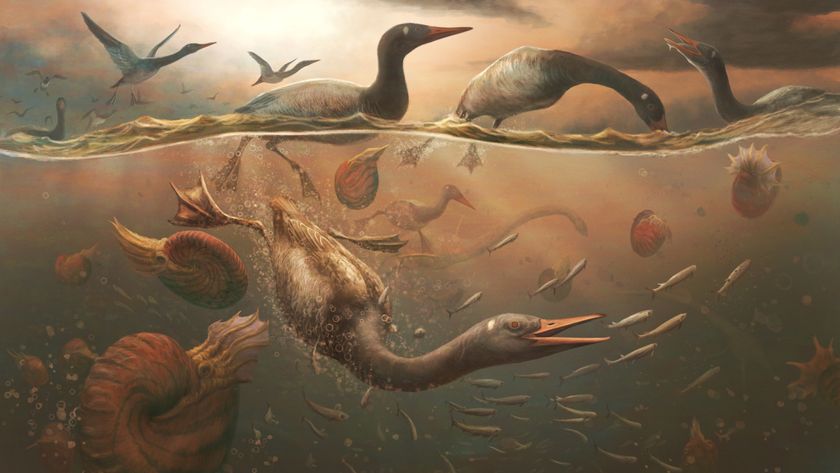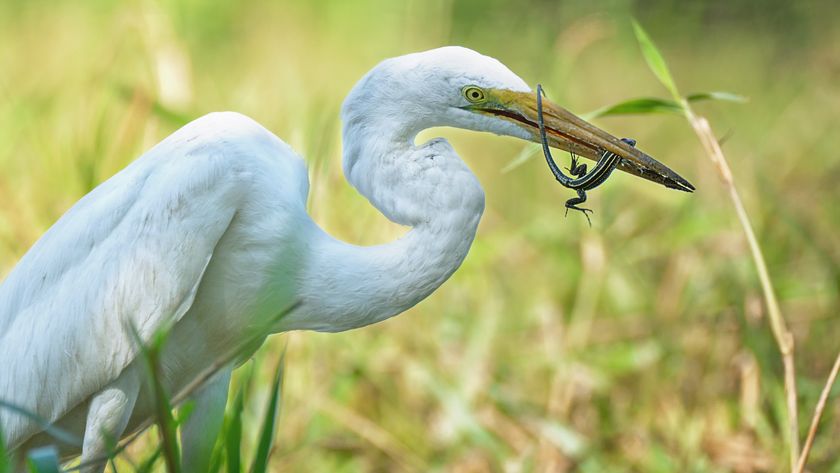Tiny Songbird Is a Champion Long-Distance Flier

The blackpoll warbler, a songbird that weighs no more than an AA battery, flies nonstop across the Atlantic Ocean during its southerly fall migration, covering more than 1,500 miles (2,400 kilometers) in two or three days, a new study confirms.
These striking black-and-white songbirds are only slightly bigger than a hummingbird, but they perform one of the most extraordinary migrations in the animal kingdom, the researchers said. The warbler's longest nonstop flight was recorded as being more than 1,700 miles (2,730 km) in three days, the scientists reported today (March 31) in the journal Biology Letters.
Only the northern wheatear has a longer nonstop flight among songbirds, but it is twice as large as a blackpoll warbler, said study co-author Chris Rimmer, an ornithologist at the Vermont Center for Ecostudies in Norwich, Vermont. [Top 10 Most Incredible Animal Journeys]
"If you account for body scale and size, the blackpoll warbler is the hands-down winner," Rimmer said. "I'm used to being amazed by birds because they do a lot of cool, extraordinary things, but it's hard to top this one."
Scientists have long suspected that the blackpoll warbler is an amazing nonstop flier, crossing the Atlantic from the Northeast to northern South America in just two to three days. (Occasionally, exhausted birds would land en masse on ships hundreds of miles from the Atlantic Coast during stormy weather.) Now, they finally have proof.

To track the birds, the researchers fitted solar geolocators weighing just two-hundredths of an ounce (0.5 grams) to 38 blackpoll warblers. The birds were captured near Mount Mansfield, Vermont, and in Nova Scotia, between May and August 2013 and then released. Scientists from the University of Guelph, in Ontario, trapped the Canadian birds and Bill DeLuca, an environmental conservation research fellow at the University of Massachusetts, Amherst, led the U.S. portion of the study.
The geolocation devices have a sensor that stores light-level data. By measuring the length of day, which varies with latitude, and estimating solar noon, which varies with longitude, the researchers can pinpoint the warbler's location to within 20 to 40 miles (32 to 64 km). The geolocators were retrieved in spring 2014, when five of the birds returned, Rimmer said. "We don't know how many birds survive the flight, but clearly many of them do, because we see them back year after year," he said.
Sign up for the Live Science daily newsletter now
Get the world’s most fascinating discoveries delivered straight to your inbox.
There are still many unanswered questions about the blackpoll warbler's migration. No one knows why the tiny bids fly out across the open ocean instead of hopping down the coast, Rimmer said. He thinks the ocean route may offer a competitive advantage. For instance, getting the journey over as quickly as possible may minimize the risk of predation or running into bad weather.
"It is a perilous undertaking, but they wouldn't be doing this if it didn't allow them to propagate their genes successfully," Rimmer told Live Science.
In summer, blackpoll warblers breed in boreal forests across Alaska, Canada and New England. In fall, the warblers gather along the northern Atlantic Coast to fatten up before flying south on favorable winds. The birds double their weight from a half-ounce (12 grams) by gorging on insects.
"They are just sheathed in a layer of fat that makes them look like little butter balls," Rimmer said.
Their fall flight takes the warblers from New England and eastern Canada south to Puerto Rico, Cuba and the Greater Antilles. From there, the birds overwinter in the rainforests of northern Venezuela and Colombia. Their spring migration is a leisurely trek up the Atlantic Coast instead of a direct flight.
Rimmer said he and DeLuca are now interested in tracking the fall migration of blackpoll warblers that summer in Alaska and western Canada. These birds are thought to travel east before starting their southerly cruise, adding up to 3,000 miles (4,800 km) to their journey.
"That would be a truly long-distance migration," Rimmer said.
Follow Becky Oskin @beckyoskin. Follow Live Science @livescience, Facebook & Google+. Originally published on Live Science.



